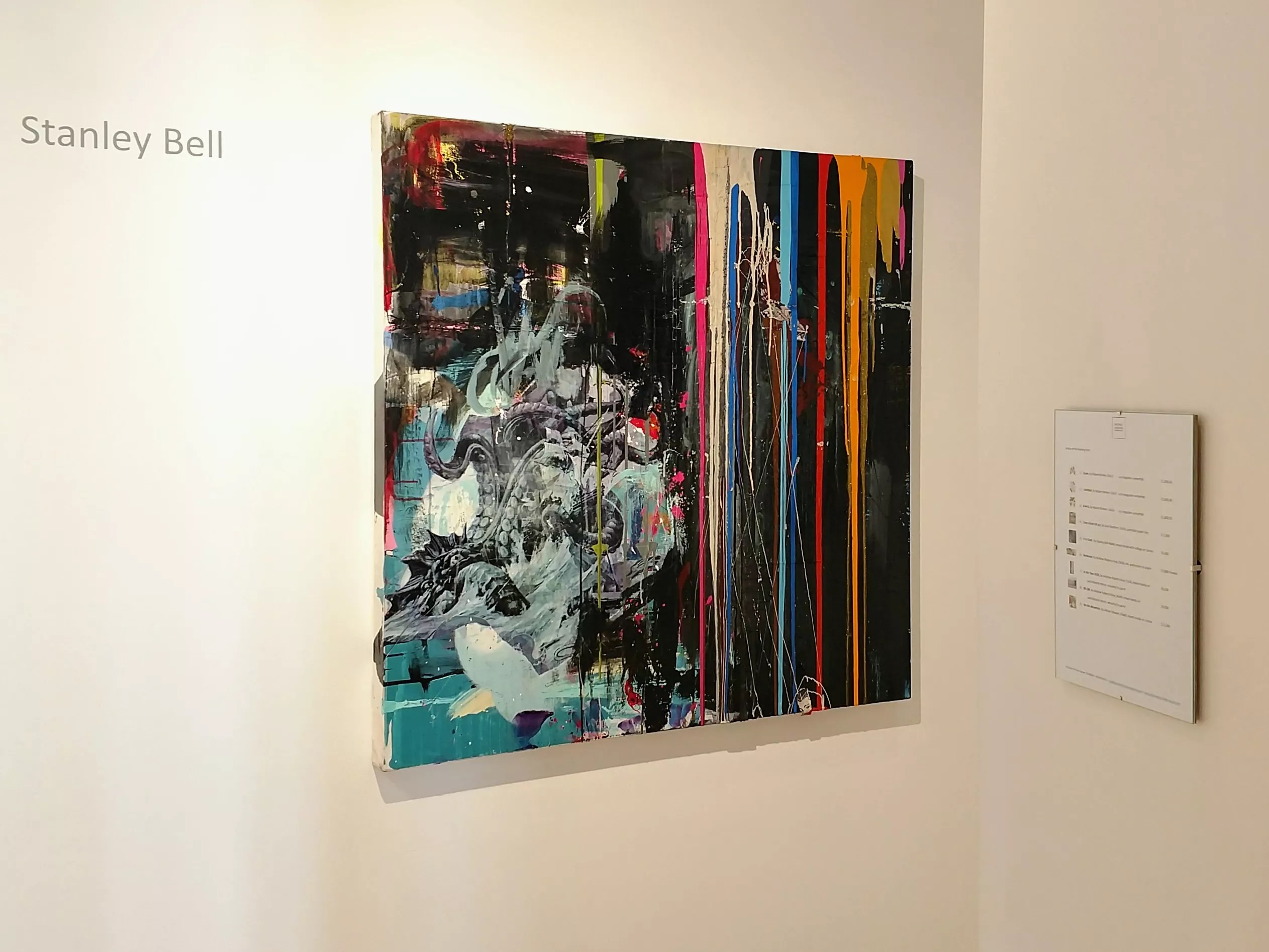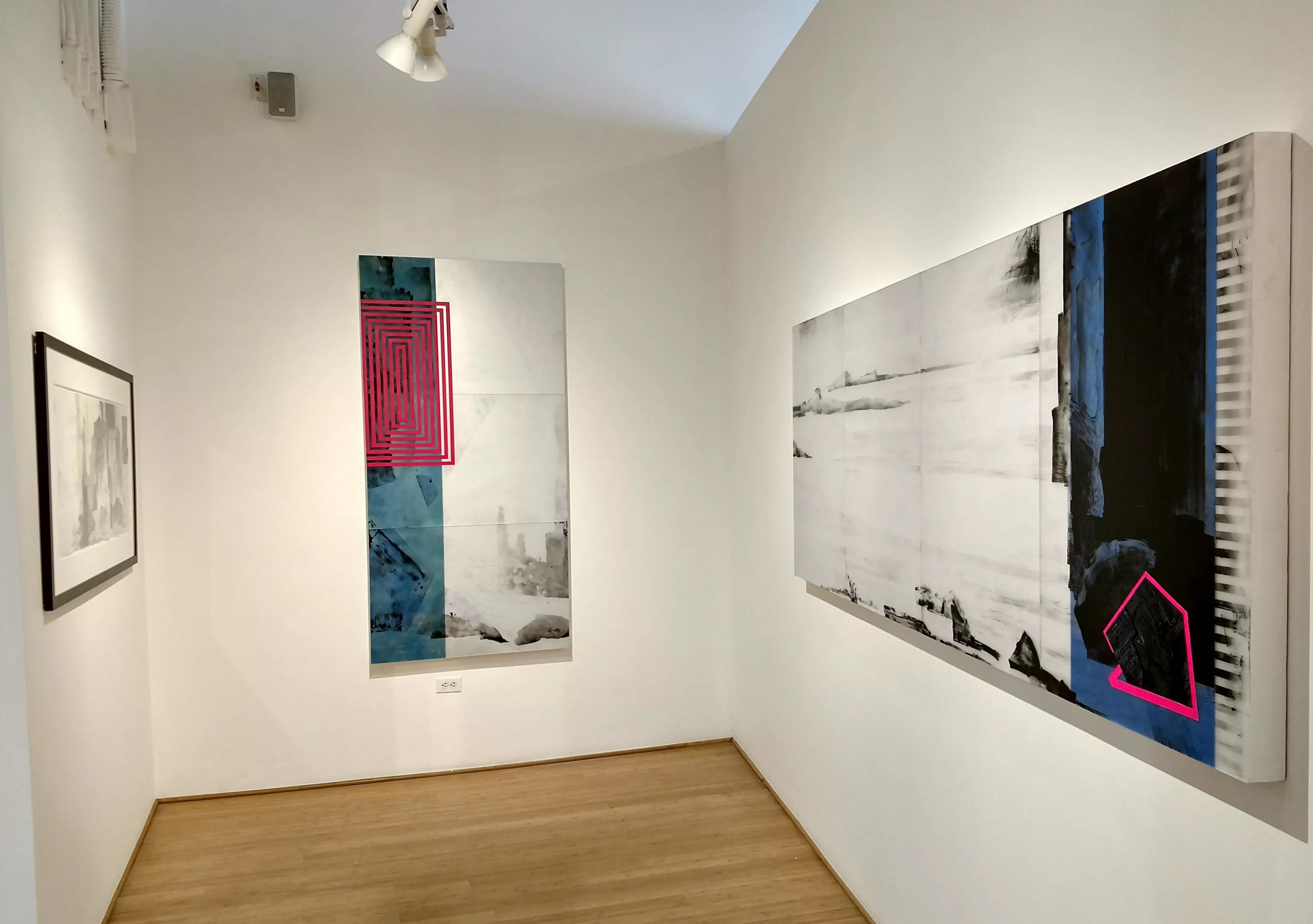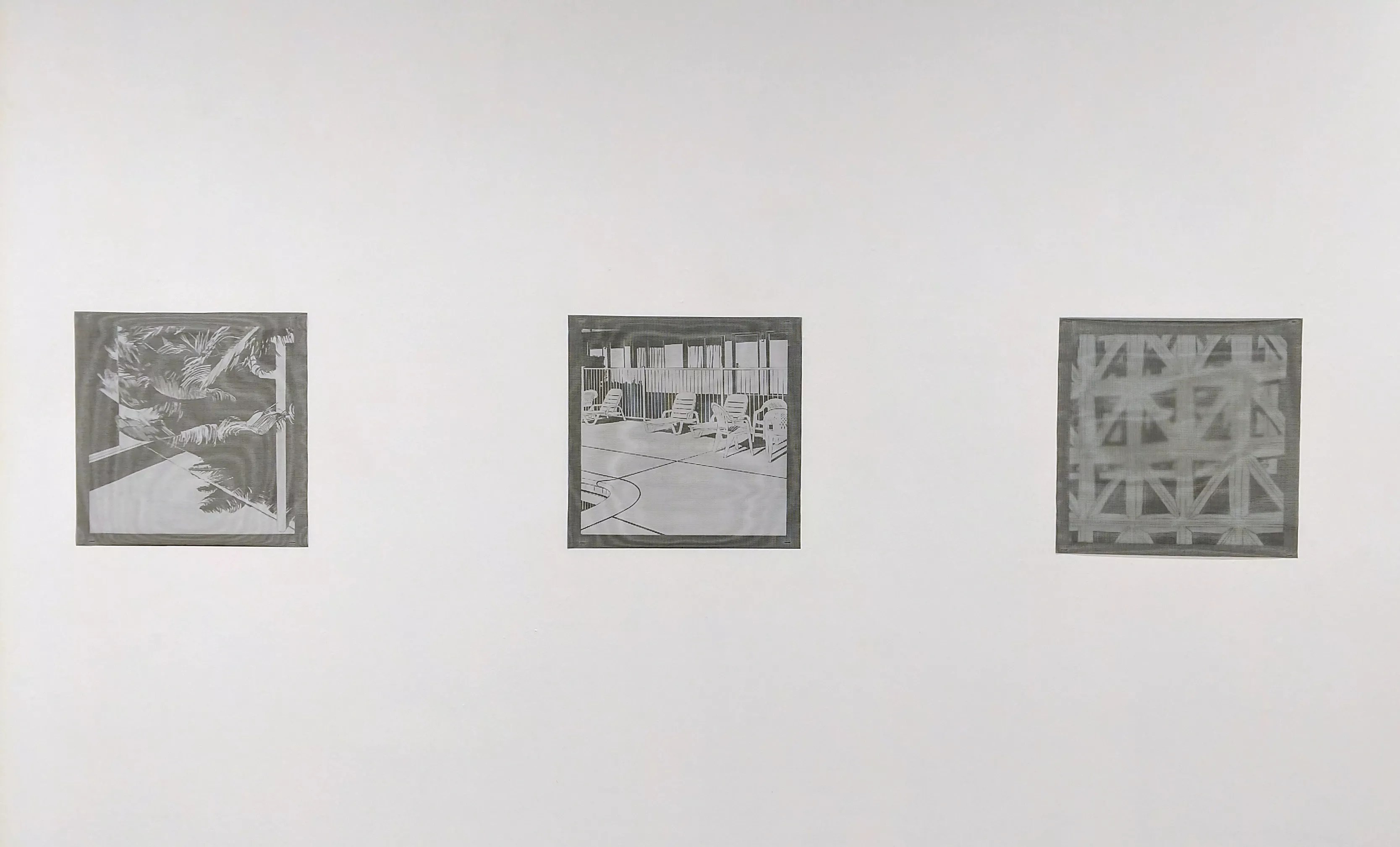
Courtesy of Michael Warren Contemporary

Audio By Carbonatix
The Colorado art scene is dominated by artists who live and work in or around Denver, but other parts of the state have fostered identifiable, if smaller, art scenes. The premier example is the area around Aspen, including Carbondale, Glenwood Springs and points beyond. Important artists were working in this region even before the late Paul Soldner founded the now nationally significant Anderson Ranch Art Center in Snowmass Village more than fifty years ago. Even so, up until the last few years, the work of most of these Aspen-area artists was easier to find in galleries on the West Coast than here in the Mile High City. But when Michael Warren Contemporary opened on Santa Fe Drive a few years ago, it started regularly mining the Aspen area for aesthetic gold. And now it’s hit the mother lode with a pair of solos, Teresa Booth Brown and Elizabeth Ferrill, as well as a group show, Artists From the Roaring Fork Valley.
The front spaces are largely devoted to Teresa Booth Brown‘s mixed-media paintings; this solo is clearly the star attraction. Brown has enjoyed a long association with Anderson Ranch, as a resident artist way back in 1989-’90 and more recently as a teacher, a visiting artist and even an interim administrator. At first glance, her paintings appear to be constructivist, made up of emphatic blocks of color set in elegant arrangements. But as you look more closely, her image vocabulary gets much messier, with recognizable things emerging faintly from beneath the oil-painted surfaces. These ghosts of representational imagery, technically a pentimento, reveal that Brown began these formalist paintings as anti-formalist, neo-dada collages made out of torn or cut-out book and magazine pages laid next to and over each other on wooden panels.

A grid of Teresa Booth Brown’s mixed-media paintings on board.
Courtesy of Michael Warren Contemporary
In paintings such as “Conspicuous,” Brown creates a surface arrangement of bars, lines and boxes that organize the underlying painted-over collages, in some cases “borrowing” the pre-existing compositional elements introduced by the printed images, like the stack of balconies on a building that becomes a pattern of parallel lines. Her taste in colors ranges from gauzy light shades to opaque deep tones, with the different shades used in defined areas of the compositions. “Conspicuous” is pretty large, measuring five feet across; only one other piece is as monumental, the closely related if more complex “Audacious.”
Denver, make your New Year’s Resolution Count!
We’re $10,000 away from reaching our $50,000 year-end fundraising goal. Your support could be what pushes us over the top. If our work has kept you informed and connected this year, please consider making a contribution today.
In addition to these paintings and others nearly as big, the show includes a set of nine smaller paintings, installed as a double stack, four over five. Evocatively titled with human characteristics such as “Impertinent” and “Bright,” these works introduce additional narratives via the painted-out pictures and text of the collages. Gallery co-director Mike McClung points out that Brown has taken a different approach to the pigments here, handling them more loosely than in the larger works.

Stanley Bell’s “It Is Clear,” mixed-media painting.
Courtesy of Michael Warren Contemporary
Artists From the Roaring Fork Valley is installed in the connecting space that joins the back gallery to the open-storage rooms. Intriguingly, some of the included artists share pictorial devices with Brown, such as hidden imagery underneath the predominant subjects of their pieces, suggesting that there’s something of a common school of thought in the area. The results are widely varied, though. For instance, the sweetness of Robert Brinker’s lovely, old-fashioned silhouettes of bouquets, like those on antique greeting cards, is covertly undercut by the fact that the blooms and leaves have been precisely cut from the pages of hard-core porn magazines, or at least photocopies that were digitally printed on finer papers. Andrew Roberts-Gray’s “In the Year 3535” (back wall) and “80-86,” both mixed media on sandblasted mirror. Courtesy of Michael Warren Contemporary
Also resonating with Brown’s approach are the altered renditions of the landscape by Andrew Roberts-Gray, who conventionalizes and minimizes the scenery, then lays abstract and geometric passages on top. The show includes two of his monumental paintings done in mixed media over sandblasted mirrors, in which suggestions of landscape vistas are subservient to the translucent colored bars and solid lines of the geometric shapes.
Stanley Bell employs hidden images and juxtaposes abstraction to representation as well. In the knockout “It Is Clear,” Bell has divided the composition into two parts: On the left is an enlargement of an appropriated image of an octopus that looks threatening; on the right he’s poured various colors of paint from the top of the panel in order to make a line of bright stripes obliterating the part of the image that lies underneath.
Elizabeth Ferrill, the second solo, is in the inviting if snug back gallery. Elizabeth Ferrill currently serves as the director of painting, drawing and printmaking at Anderson Ranch. Her signature approach is to render simple representational images, often views of architecture or at least of architectonic things, and she does her renderings so that the finished depictions have a precisionist vibe in which straight lines carry out most of the illusion. There is a crispness to the details, and the traditional perspective makes the views she’s recording very readable for the viewer.

Installation view of works from Elizabeth Ferrill
Courtesy of Michael Warren Contemporary
The works included here, all from her “Illusions” series, are fairly strange, but their strangeness is subtle and derives from the materials she uses more than from the subjects she’s picked. Starting with simple drawings of mundane sights – including a decorative grill, the side of a building and lounge chairs set up poolside – Ferrill hand-cuts silkscreen film to convey a halftone of the representations. She then pulls the prints with a squeegee, but instead of printing on paper, she employs little squares of metal window screening. The basket weave of the screens provides the prints with gridded grounds, and the transferred images become somewhat ethereal, a quality heightened by the contrast between the broken areas of white ink and the shiny gray metal.
While the Teresa Booth Brown solo is particularly strong, all three shows are testament to the rich vein of art running through the Aspen area.
Teresa Booth Brown, Elizabeth Ferrill and Artists From the Roaring Fork Valley, through September 1 at Michael Warren Contemporary, 760 Santa Fe Drive, 303-635-6255, michaelwarrencontemporary.com.